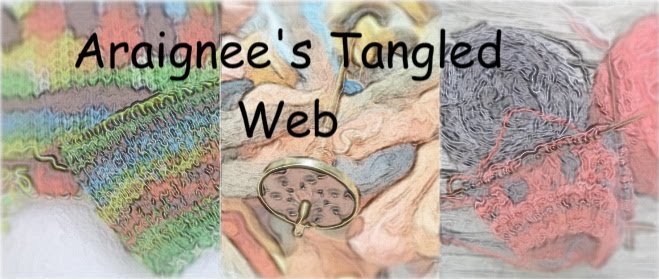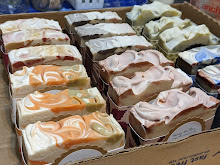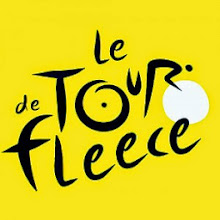Last week kathy b asked me how I learned to spin. She wants to learn how but not with a wheel. I had to think a lot about it before I could answer her because for me it was all trial and error. I read lots of books and I watched lots of videos but the only thing I learned from them was that nobody agrees on one correct way to go about it. The secret is just to figure out what works for you.
First I figured out the hard way that size matters. The smaller the spindle, the better. I wasted a year trying to learn on that boat anchor at the top of the photo. When I bought a bunch of little cheapo spindles from someone on ebay, I had my aha moment. Gravity is not your friend when you are learning. Now I only use 2 inch, .5 ounce Golding spindles. I love them. I have five and they are always in use.
Hooks matter. You want one. Spindles without them are hard to learn on. Save them for later.
Don't be tempted to waste your money on things like this. They work but are more fiddly in the long run than just a plain old drop spindle.
Get some bad fiber. Yes, I said bad. Don't start with super soft, expensive Merino, Cormo, Polwarth or silk and bamboo mixes. They are too slippery. Get something rough and a bit itchy-Corriedale, BFL, Shetland. The less you pay for a braid the better because you are going to tear it up. You have to figure out how fiber works before you can spin so you have to split it and pull it apart. Get something with lots of colors. The color changes will help you see what you are doing when you start to learn to ply.
Pull off long finger width strands and then pull them out like taffy until you get them long and thin. You want to see how the fibers line up and learn to let them slide past each other without breaking apart. You have to learn how to hold the fiber tight enough to control it but at the same time loose enough to be gently pulled apart. That takes practice.
Think wispy. When you get wispy you are ready to fold over the top of the wisp onto the hook of the spindle and give it a little twirl. What comes next is magic. You make a little inch or so of yarn. The trick now is to figure out how to feed more of the wispy stuff into the part that is twirling. It takes a while to figure it out but it's not impossible. Watch lots of videos, practice a lot and suddenly it just happens. From then on it's a slippery slope to a closet full of roving and a shed full of fleeces. Don't say I didn't warn you.
I was so proud of my first singles (the ball at the top of the post) that I didn't want to ply them. I just wanted to knit with them so I made a shawl out of them. I loved that silly shawl. I wore it everyday for years and then I went and lost it.
Later I did ply some singles and ended up with lots of better behaved but wonky yarn. I wasn't too proud of it then but I should have been. That thick and thin thing I had going on is hard to do.
I couldn't make this wonderfully crazy stuff now if I wanted to and I want to.
Everyone says your first yarns are your best and I think they are right. Itchy, but nice. If I had to do it over again, I would have made mittens instead of hats. Itchy mittens I can take, itchy hats get packed away-forever.














.jpg-large)


What a fun memory lane trip! I started with a wheel and then moved to a spindle....I tried a big one early on and thought it was hopeless! I liked seeing your early projects!
ReplyDeleteExcellent information. My favorite spindle when I was learning was made from 2 CDs and a wood knitting needle -- so light with a wonderful spin.
ReplyDeleteVery interesting!
ReplyDeletesolo many great tips!!!!!
ReplyDeleteI'm making a list
you have been a tear saver!
I love that beautiful bright shawl. I'm so sorry you lost it. But I'm glad you have a photo of it. So cheery! Good inspiration.
ReplyDelete